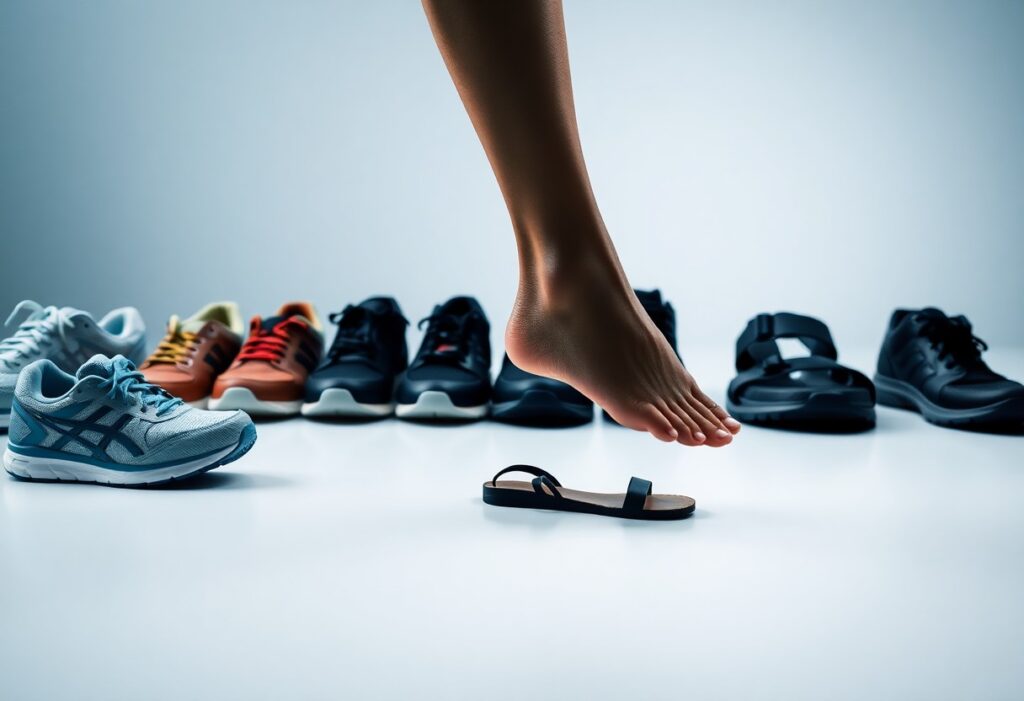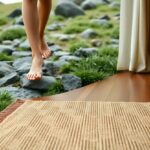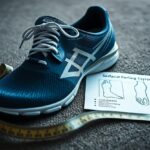
As you walk, the choice of footwear can significantly enhance your foot health or lead to detrimental effects. Many individuals mistakenly believe that shoes with added cushioning and support are the best remedies for foot discomfort; however, traditional footwear often causes more harm than good. Dr. Alissa Kuizinas, a respected podiatrist from Massachusetts, advocates for barefoot shoes or minimalistic footwear, arguing that they can contribute to stronger and healthier feet. By opting for shoes that allow your feet to function naturally, you can reduce the chances of developing foot problems and improve your overall foot wellness.
Recognizing the Negative Impact of Conventional Footwear on Foot Health
While traditional shoes may provide temporary relief from foot pain, they often exacerbate existing conditions and introduce new complications, as highlighted by Dr. Alissa Kuizinas. She points out that the $133 billion shoe industry often prioritizes style and profit over genuine foot health, leading to designs that can constrict and weaken your feet over time. This dependence on conventional footwear can create a detrimental cycle that ultimately compromises your foot health and leads to long-term issues.
Examining the Shoe Industry's Misguided Solutions for Foot Health
The heart of this issue lies in the shoe industry’s flawed approach to addressing foot health, which tends to focus on adding excessive cushioning, support, and rigid construction without addressing the root causes of discomfort. This strategy can create a false reliance on shoes that may actually harm your foot health in the long run, leading to various complications that could have been avoided with better design principles.
Spotting the Design Flaws of Traditional Footwear
Many traditional shoe designs incorporate narrow toe boxes, rigid soles, and excessive cushioning that can impede natural foot movement, resulting in weak and dysfunctional feet. Dr. Kuizinas emphasizes that footwear should protect your feet from external elements rather than restrict their natural movement. An ideal shoe design should focus on natural foot function and minimalist features, such as wider toe boxes, flexible and flat soles, and minimal cushioning to promote foot health.
By adopting barefoot shoes or minimalistic footwear, you can effectively strengthen your feet and improve your overall foot well-being. Dr. Kuizinas champions a philosophy of utilizing as little shoe as possible, allowing your feet to function naturally and move freely, which is essential for maintaining optimal foot mechanics.
Understanding the Importance of Allowing Natural Foot Movement
Footwear that restricts your foot's natural movement can lead to a host of foot problems and discomfort. It is crucial to assess how your shoe choices impact your overall foot health and level of comfort to make informed decisions.
Evaluating How Footwear Influences Foot Mobility
To fully understand the effect of shoes on your foot's mobility, it's vital to examine the specific designs and characteristics of your chosen footwear. Traditional shoes often include cushioning and support features that can, in fact, hinder your foot's natural movement, resulting in weak and dysfunctional feet over time. This restriction can prevent your feet from developing the necessary strength and flexibility to thrive.
Realizing the Benefits of Allowing Natural Foot Mobility
The benefits of enabling your feet to move naturally are extensive, as strong feet are crucial for overall foot health. By choosing minimalistic shoes or barefoot footwear, you empower your feet to perform as intended, fostering strength and resilience.
Movement is essential for developing strong feet. When limited by conventional footwear, you risk encountering various foot issues and discomfort. In contrast, embracing minimalistic shoes or barefoot options can significantly enhance your foot health by allowing natural movement and promoting strength-building. By selecting appropriate footwear, you can reduce your risk of developing foot problems and improve your overall foot wellness.
Diving into the Concept of Functional Footwear
Understanding functional footwear is vital, as these shoes prioritize both foot health and natural movement. Functional shoes are intentionally designed to allow your feet to operate as they were meant to, eliminating the need for excessive support or confinement.
Defining Functional Footwear and Its Key Attributes
Through research and experimentation with various shoe styles, you'll find that functional footwear has distinct characteristics, including a wide toe box, flat and flexible soles, as well as minimal cushioning and support. These features enable your feet to move freely and naturally, promoting stronger and more capable foot mechanics.
The Advantages of Functional Footwear in Enhancing Foot Health
Wearing functional shoes presents numerous benefits, such as increased foot strength, a lower risk of injury, and improved overall foot health. These shoes allow your feet to function as intended, leading to stronger feet and better balance in your daily activities.
Functionally designed footwear is crafted to support your feet without imposing unnecessary restrictions, enabling them to move and flex naturally. This design philosophy fosters optimal foot health and reduces the likelihood of developing foot ailments. By choosing functional shoes like barefoot shoes or minimalistic options, you actively promote healthy foot function and reduce the risk of foot pain and injury. Transitioning to functional footwear may require gradual adjustment, but the long-term benefits for your foot health are invaluable.
Essential Features to Look for in Functional Footwear
To achieve optimal foot health, it is essential to seek out shoes that possess certain features. Key attributes to consider include:
- Wide toe box
- Flat and flexible soles
- Minimal cushioning and support
Being mindful of these characteristics will greatly assist you in selecting shoes that promote healthy foot function and support.
Understanding the Significance of Wide Toe Boxes and Flexible Soles
A vital feature of functional footwear is a wide toe box, which allows your toes to spread naturally. This design prevents toe jamming and other discomfort-related issues that could lead to chronic foot pain and complications.
Recognizing the Importance of Minimal Cushioning and Support
In addition to a wide toe box, functional shoes should also have minimal cushioning and support. This design element enables your feet to move naturally while strengthening foot muscles, thereby reducing the risk of foot issues.
It is crucial to emphasize that minimalistic footwear, such as barefoot shoes, can significantly enhance your foot health by allowing your feet to function freely. By choosing shoes with minimal cushioning and support, you can bolster muscle strength in your feet and decrease the chances of injuries. This strategic choice not only improves your overall foot health but also lowers the likelihood of experiencing chronic pain. Therefore, prioritizing footwear that allows your feet to move naturally without excessive cushioning or support is essential.
Transitioning to Functional Footwear: A Step-by-Step Approach
Having acknowledged the importance of functional footwear, it’s time to initiate your transition. Contrary to the common misconception that more cushioning and support equate to greater comfort, you should aim for minimalistic shoes or barefoot shoes that facilitate your feet's natural functioning.
Tips for a Smooth Transition to Functional Footwear
Despite any initial hesitations, start integrating functional shoes into your daily routine by following these practical recommendations:
- Begin with short walks and gradually increase your distance
- Choose shoes that feature a wide toe box and flat soles
- Opt for minimal cushioning and support
The key is to allow your feet ample time to adjust to the new shoes while simultaneously strengthening the muscles in your feet.
Emphasizing the Importance of Patience During Your Transition
Transitioning to functional footwear requires patience and a gradual approach. Shoes that are overly minimalist can cause discomfort and pain if your feet are not accustomed to them. Taking things slowly is crucial, allowing your feet to acclimate to the new footwear.
Footwear options such as barefoot shoes or minimalistic shoes can be incredibly beneficial for your foot health, but it's essential to introduce them gradually. Overuse or improper sizing can result in injuries or persistent discomfort. The ultimate goal is to strengthen your foot muscles while improving your overall foot health, so patience is key, and rushing through the transition is not advisable. The rewards will be substantial; expect enhanced balance, reduced pain, and stronger feet.
Building Strong and Functional Feet with the Right Footwear
Even in a society where shoes with excessive cushioning and support are the norm, you can cultivate strong and functional feet by carefully selecting your footwear.
Exploring the Relationship Between Foot Strength and Overall Health
Alongside various health factors, foot strength plays a critical role in your overall well-being, impacting your balance, posture, and movement abilities.
How Functional Footwear Supports Strong Feet Development
Functionally designed shoes characterized by a wide toe box, flat and flexible soles, and minimal cushioning are key to developing strong feet, as they enable natural movement.
Indeed, wearing functional shoes or barefoot shoes can greatly assist in building stronger foot muscles and enhancing your overall foot health. By allowing your feet the freedom to move and function naturally, you can minimize the risk of foot problems while optimizing your balance and stability. As you transition to minimalistic shoes, you should anticipate improvements in your walking technique and overall sense of well-being.
By taking proactive steps in managing your foot health, you can choose shoes that support your feet's natural functions rather than hinder them. Selecting barefoot shoes or minimalistic options that permit your feet to operate naturally will encourage strength and stability over time. Start your journey by seeking footwear with a wide toe box, flat and flexible soles, and minimal cushioning and support, while being patient as you transition to a more natural walking style.
The Article A Podiatrist’s Guide to How Shoes Affect Your Foot Health appeared first on My Shoes Finder
The Article How Shoes Impact Your Foot Health: A Podiatrist’s Insights Was Found On https://limitsofstrategy.com










Comments are closed